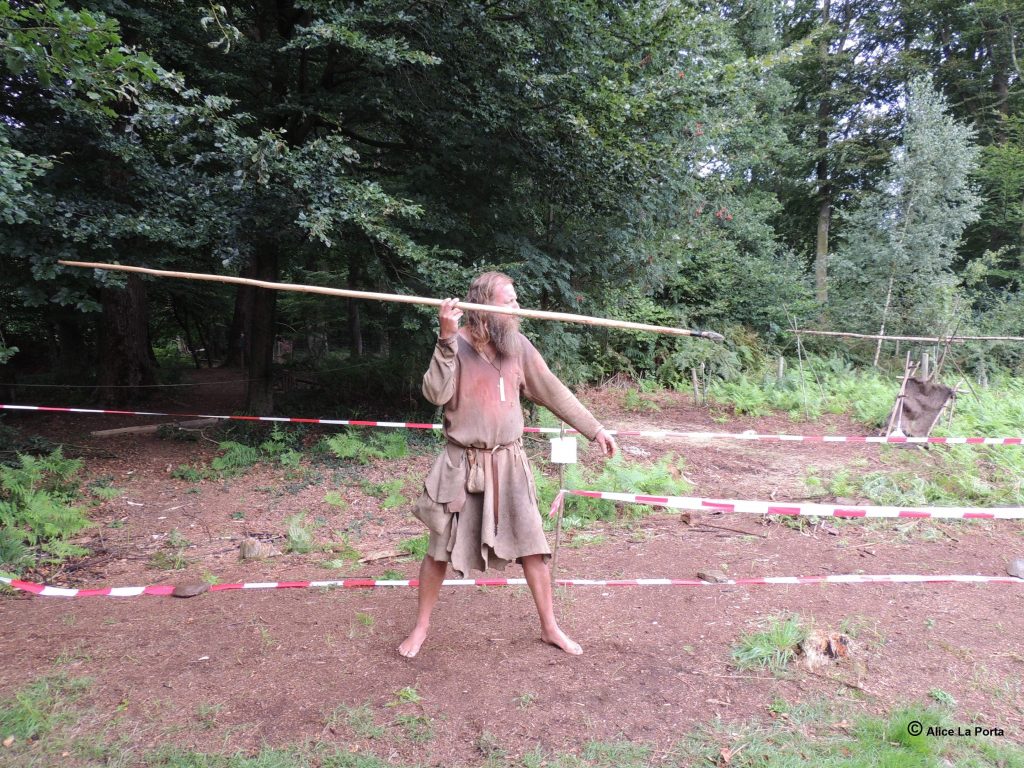PhD student Alice La Porta is undertaking archaeological experiments on the nature of Neanderthal spear use this summer as part of her PhD project on Middle Palaeolithic stone tool projectile technology. Read all about her research below!
Did Neanderthal use stone-tipped wooden spears as throwing hunting weapons?

Alice la Porta during the first set of experiments (summer 2015), at Aöza Open-air Museum during the “Mesolithic Living” project.
In Europe, a small number of wooden spears have been found in archaeological contexts from the Lower and Middle Palaeolithic (c. 1,200,000-40,000 years ago), such as at Schöningen, Clacton and Lehringen. The first suggestion that such spears had stone tips comes in the European Middle Palaeolithic, the time of the Neanderthals, in the form of distinctive stone points, also called Levallois or Mousterian points. But how can we be certain that these stone points were used by Neanderthals as spear-heads for their wooden spears? Analysing the utilization wear and the impact fractures present on the surfaces of modern, experimentally-used spear-tips and archaeological stone points, using optical and digital microscopes, is one approach to inferring the prehistoric uses of these tools.
A big question in any discussion of Middle Palaeolithic spears is…how were Neanderthals using their stone-tipped wooden spears? Where Neanderthals throwing their spears or were they using them as close-range thrusting weapons? It has previously been argued that, while Neanderthal populations may have used stone-tipped wooden spears, these were rudimentary thrusting weapons. However the differences between throwing and thrusting spear delivery systems are still poorly understood for the earlier Palaeolithic, both in terms of spear performance and concerning the traces left behind on the spear tips. This partly reflects the limited range of experiments which had, until recently, been undertaken.

First set of experiments (summer 2015), at Aöza Open-air Museum during the “Mesolithic Living” project.
Building on previous archaeological experiments, and drawing on ethnographic observations, I am conducting a series of weaponry experiments within my PhD research project. The experiments aim to test the performances of replica Middle Palaeolithic stone-tipped wooden spears, and explore the differences in the resulting wear and breakage patterns that can be seen on the thrown and thrusted spears.
The experiments have been funded by the UK’s South West and Wales Doctoral Training Partnership (SWW DTP), the Arts and Humanities Research Council (AHRC), and the University of Exeter. They are taking place at Aöza Open-air Museum “Steinzeitpark Dithmarschen” (Albersdorf, Germany) within the OpenArch/EXARC partnership. The support of all of these organisations is very gratefully acknowledged.
Written by Alice La Porta, adapted for blog by Emily Johnson.
